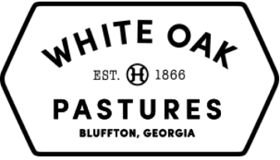.png?width=1600&height=840&name=image%20(4).png)
The market concentration described on the four foods below sounds bad for consumers-
- Carrots: Two companies control 60% of the carrot supply.
- Prepared soups: Four companies own 70% of the prepared soups market.
- Almond milk: A whopping 81% of almond milk is owned by four companies.
- Dips: PepsiCo, with its popular brands like Tostitos, Lay’s, and Fritos, controls 88% of the dip market.
But it can get worse. Did you know that 85% of the market share for beef is controlled by only 4 packers:
- TYSON
- JBS
- CARGILL
- NATIONAL BEEF
This market concentration does not appear as troublesome as it is when you are shopping at your meat counter. This is because these four gigantic packers market products under 70 different brand labels.
This illusion of choice stems from decades of lax antitrust enforcement that led to a wave of unchecked mergers and acquisitions across nearly all sectors of the food system. As these companies grew larger and more profitable, they accrued more power and influence. This undue power has enabled mega-corporations to rake in record profits by squeezing farmers and workers and charging consumers more at the grocery store.
This level of corporate control in the meatpacking sector has devastated the industry: Farmers have been driven off their land, prices have increased for consumers, and our food supply is vulnerable to disruptions.
Believe it or not, we’ve actually been here before. In the early 1900s, a “Meat Trust” of five dominant meatpackers controlled the livestock and poultry sector. But public outcry led to regulations like the Packers and Stockyards Act of 1921 and antitrust legal action, which successfully broke up that oligopoly.
However, this all began to change in the 1980s when weakened antitrust enforcement led to a new wave of consolidation through a series of mergers and acquisitions. By 1990, four firms—IBP, Cargill, ConAgra, and National Beef—controlled 70% of cattle processing in the U.S. Today, the “Big Four” remain entrenched and have consolidated further, with only their names changing through acquisitions. For example, Tyson acquired IBP, and JBS absorbed multiple competitors. The effects of the meatpacking monopoly are nowhere as clear as in the beef industry.
The consolidation of the beef industry continues to harm farmers and consumers as this corporate power remains largely unchecked.
While it may appear to the consumer that a cattle rancher has many options for where to sell their livestock, in reality, it’s a bottleneck. There are few options for ranchers to sell to, which limits their ability to seek better pricing or terms from competing companies. This means that ranchers often have little choice but to accept the short end of the stick.
This transformation of our livestock markets has dramatically undermined the viability of smaller and midsize operations, driving hardworking farmers and ranchers off the land. Between 2002 and 2022, roughly 58,000 feedlots (72%), 18,000 hog farms (23%), and 56,000 dairy farms (61%) exited the market, yet our livestock production has not decreased in tandem. Instead, we simply have fewer operations producing the vast majority of our food supply.
For consumers, this consolidation leaves our food system highly vulnerable to supply chain disruptions. For example, when a Tyson beef processing plant in Holcomb, Kansas—which was responsible for five to six percent of beef processed in the U.S.—caught fire in 2019, it caused market panic and price spikes.
A market with fewer players also makes coordination easier, allowing the few dominant corporations to push up consumer prices and drive down farmers’ share of the consumer dollar. This market manipulation isn’t just speculative: The Big Four settle many price-fixing lawsuits each year, with settlements between the Big Four reaching hundreds of millions of dollars in 2025 alone.
While consumers pay more at checkout, those extra dollars are not making it to farmers. Whereas 70% of the consumer’s beef dollar went to cattle ranchers in 1970, today, ranchers’ share of the consumer dollar is closer to 30%.
Please know and support your local farmer.
- Will Harris
Watch Will talk more about this topic in the video below.

